- Shop Now
- Burncoose Specialities
- This Month
- Offers & Promotions
- RHS Chelsea Flower Show 2024
- 40 years at Burncoose
- Engage With Us
- Information, Help & Advice
- About Us & Our Services
- Terms & Conditions
- Log In / Register
HYDRANGEA
Commonly known as Hortensia
Colour-changing mopheads and lacecaps in shades of pink, white and blue from early summer to late autumn and delicate skeletons of flower through the winter.
Cones of white from paniculata and bronze and purple foliage from quercifolia.
Genus of 80 or more species of deciduous and evergreen shrubs and climbers. They originate from woodland in eastern Asia and North and South America.
The larger, showier flowers on flat, domed or conical flower heads are sterile, the smaller, fertile flowers are usually found in the centre. The climbers are suitable for a shady wall or fence and mature specimens provide shelter for insects.
Paniculata species attract insects as they have fertile flowers amongst the sterile ones.
-
EvergreenLeathery, dark green leaves to 15cm (6in) long, sharply toothed on young plants
-
 CreamCreamy white
CreamCreamy white -
 Height5m (16ft)
Height5m (16ft) -
 Spread5m (16ft)
Spread5m (16ft) -
ClimberSome of these climbing plants will need trellis or wire supports if grown on walls or fences. Other grow aerial roots and are self-clingingVigorous, woody climber, clinging by aerial roots. Produces flowerheads to 15cm (6in) across with predominantly fertile flowers from large, spherical buds
-
 Hardy - average winterHardy through most of the UK apart from inland valleys, at altitude and central/northerly locations. May suffer foliage damage and stem dieback in harsh winters in cold gardens. Plant can withstand temperatures down to -10°C (14°F)
Hardy - average winterHardy through most of the UK apart from inland valleys, at altitude and central/northerly locations. May suffer foliage damage and stem dieback in harsh winters in cold gardens. Plant can withstand temperatures down to -10°C (14°F) -
 Full sunShelter from cold, drying winds
Full sunShelter from cold, drying winds -
 Partial shade
Partial shade
-
Additional Features
 Pests & DiseasesAphids, red spider mites, scale insects, vine weevils, capsid bugs, grey mould (Botrytis), hydrangea virus, powdery mildew, leaf spot, honey fungus
Pests & DiseasesAphids, red spider mites, scale insects, vine weevils, capsid bugs, grey mould (Botrytis), hydrangea virus, powdery mildew, leaf spot, honey fungus Place of originChile, Argentina
Place of originChile, Argentina -
Burncoose SpecialitiesHydrangeas
-
HardinessFrost hardy (down to -5)
-
Leaf margin
 Entire
Entire(see photos above)  Serrate
Serrate(see photos above) -
Leaf shape
 Elliptic
Elliptic(see photos above) -
Pruning group
 Pruning group 1Suitable for: Deciduous and evergreen trees, and some deciduous shrubs.
Pruning group 1Suitable for: Deciduous and evergreen trees, and some deciduous shrubs.
Pruning: Minimal pruning required. Prune wayward or crossing branches to maintain a healthy framework.
When: When dormant in the late winter/early spring. Some in the summer/autumn to prevent bleeding of sap.
-
Seasonal InterestSummer
-
Soil ConditionsFertile moist well-drained soilModerately fertile. Humus-rich
-
Toxic - Category C
 May cause skin allergy(People & Pets) Maybe harmful to pets if eaten
May cause skin allergy(People & Pets) Maybe harmful to pets if eaten -
WildlifeRabbit Resistant
- Hydrangeas for everyone!
- Quick tour of hydrangea stocked - Video Tip ondemand_video
- Soil & Feeding
- Pruning Hydrangeas
- Pruning Hydrangeas - Video Tip ondemand_video
- Hydrangeas, keeping them blue - Video Tip ondemand_video
- Propagation
- Drying Flower Heads
- Drying hydrangea flower heads - Video Tip ondemand_video
- Popular Mopheads & Lacecaps
- Hydrangeas and other plants
- Further Reading
Buy Varieties of HYDRANGEA
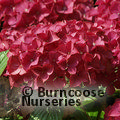
HYDRANGEA 'Alpengluhen'
Mophead - red, medium growing


HYDRANGEA 'Altona'
Mophead - frilled blue or red

HYDRANGEA 'Ami Pasquier
Mophead - deep red, dwarfish habit

HYDRANGEA 'Ayesha'
Mophead - blue or pink lilac-like flowers
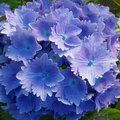
HYDRANGEA 'Benelux'
Mophead - very large deep blue flowers

HYDRANGEA 'Blueberry Cheesecake'
Lacecap - double blue lace-cap flowers with a yellow eye
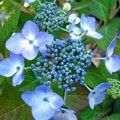
HYDRANGEA 'Blue Wave'
Lacecap - ('Mariesii Perfecta')
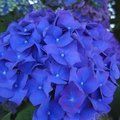
HYDRANGEA 'Enziandom'
Mophead - deepest navy blue on acid soil, one of the finest blues. AM 1993

HYDRANGEA 'Europa'
Mophead - purplish-blue to dark pink
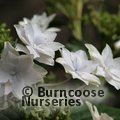
HYDRANGEA 'Fireworks'
Lacecap - (syn. 'Jomari') this exceptional new pure white hydrangea has double star-shaped florets - like exploding fireworks with thin bowed little stems connected with the inflorescence


HYDRANGEA 'Generale Vicomptesse de Vibraye'
Mophead - vivid rose or a good blue depending on soil conditions
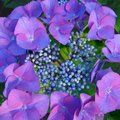
HYDRANGEA 'Geoffrey Chadbund'
Lacecap - red or purple

HYDRANGEA 'Glam Rock'
Mophead (syn. Schloss Wackerbath) Pink/purple mophead flowers with green tips and blue centre

HYDRANGEA 'Hamburg'
Mophead - very dense mophead

HYDRANGEA 'Hobella'
Lacecap - flowers white flushed pink in summer fading to green in autumn
Useful extras...
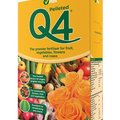
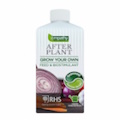
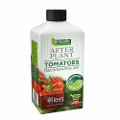
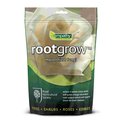
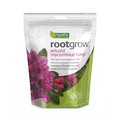




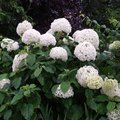




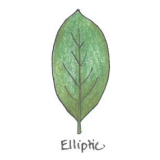
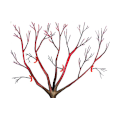










 Gift-wrapping available
Gift-wrapping available




